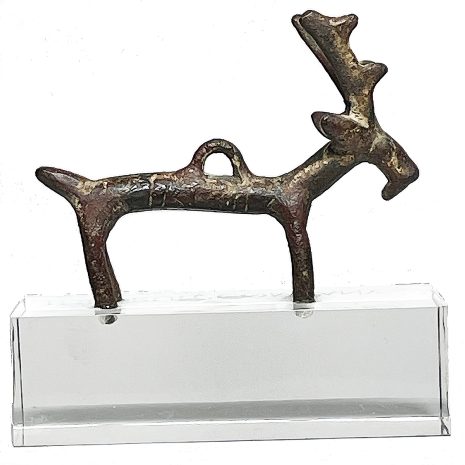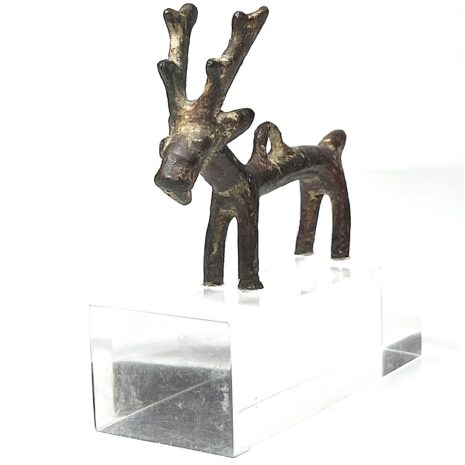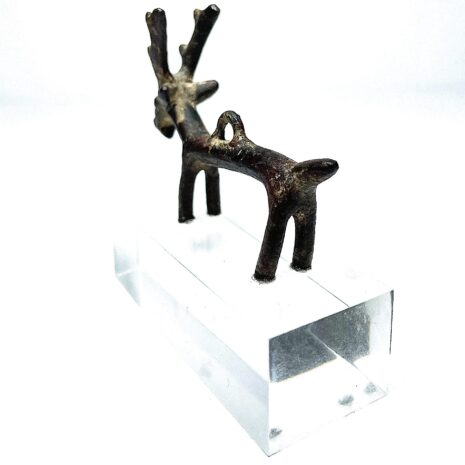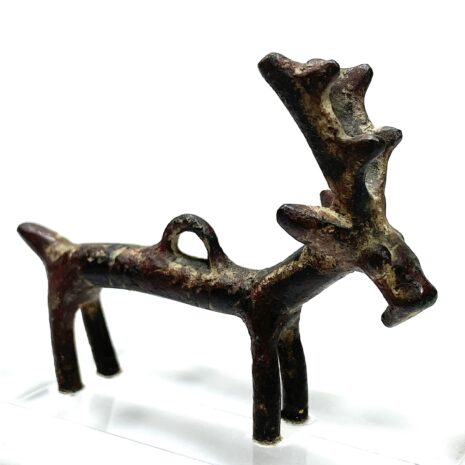Rare Ancient Bronze Mountain Goat Amulet, Iran, Luristan, H: 3″
Original price was: $450.00.$300.00Current price is: $300.00.
H: 3″ W: 3.125″ D: 1.25″ | FREE SHIPPING WITHIN CONTINENTAL U.S.
Luristan nomads made sophisticated bronzes prized in the ancient world for their designs and fine craftsmanship. This Iron Age finely cast curved long horned goat is set on a lucite base.
Description
Small bronze charms of animals like this have a loop on the back to worn as spiritual jewelry, personal adornment, a votive or ritual animal fetish or hung as an amulet on a horse to bring hunters luck and success in their hunt.Most ethnic Luristan Iron Age bronzes were small items from the the Zagros Mountains valleys in Western Iran. With uncertain origin, they were likely Persians related to modern Iranian Lur people. Most scholars agree that items like this were made 1000-600 BCE. This Iron Age finely cast curved long horned goat has a detailed head with long antlers, tall thin legs and large eyes.It was used by nomads who had mostly portable possessions, weapons, tent-poles, sleeping and eating gear, and other necessities who transported their wealth by horses often on short notice. Animal images are common, especially long-horn goats and sheep which were generally thin, inventive, and very distinctive. Mounted on a Lucite stand, this is in excellent condition and has a fine aged patina.
Sources:
Encyclopedia Iranica, “The Bronzes of Luristan”
Edith Porada, “The Bronzes of Luristan,” Record of the Art Museum, Princeton University
Iranciaonline, “Bronzes of Luristan”
Jane C. Waldbaum, Luristan Bronzes, Princeton, Princeton University Art Museum, Vol. 32, No.2, 1973, pp. 8-15.
Additional information
| Weight | 4 lbs |
|---|---|
| Dimensions | 6 × 6 × 6 in |
| Place of Origin | Ancient Mediterranean |
| Period | Iron Age |
| Date | 1000-650 BCE |
| Materials and Technique | Metal |
| Dimensions (inches) | Ht: 3" W: 3.125" D: 1.25" |
| Dimensions (metric) | Ht: 7.62cm W:7.94cm D: 3.175cm |
| Weight | 1941BCE |
| Condition | Excellent, fine patina demonstrating age and use |
| Shipping Box Size | |
| Item Number | 1941BCE |








